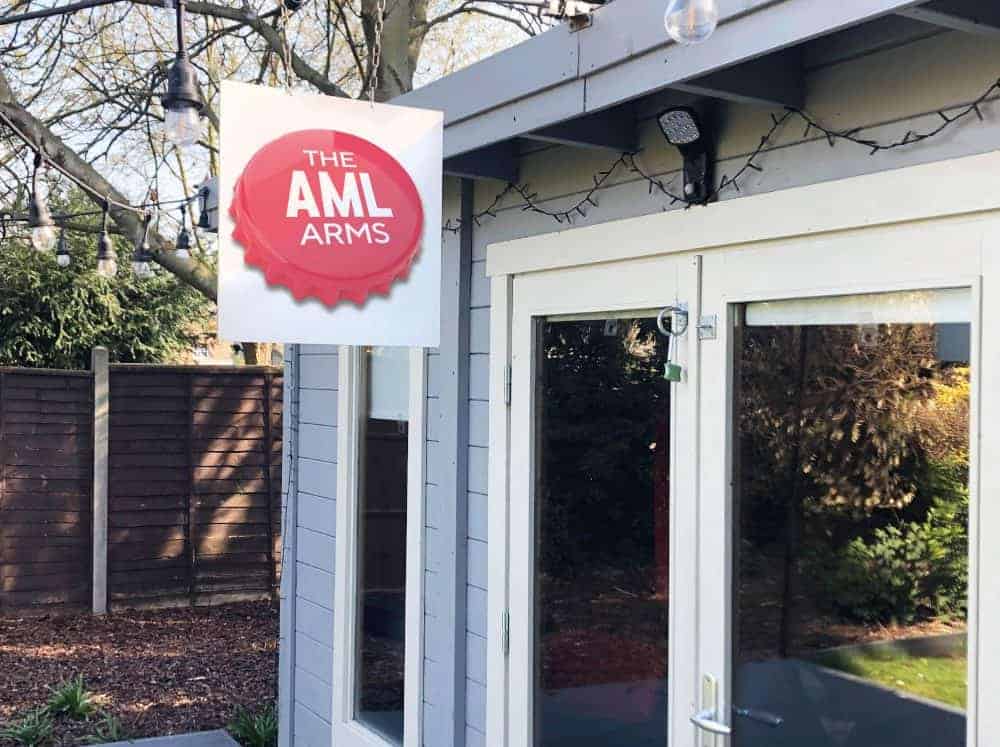AML’s Chris Walker spent many, many years commuting into London from leafy suburbia. When his kids left home, he and his wife let out their house, and rented a flat in Clerkenwell ‘for a bit of fun’. They fell in love with the area and never moved back. Since then, he’s become something of a self-confessed local history nerd, boring colleagues and friends alike with his ‘moderately interesting facts’.
These facts, stories and drawings can now be found in a small book, which went to print this month. Here are a few excerpts from the resulting ‘101 moderately interesting facts about Clerkenwell’.
Fact 1 Clerkenwell takes its name from The Clerk’s Well. The well was located within the boundary walls of St Mary’s Nunnery, in and around what is now Clerkenwell Close. It was the scene of medieval biblical miracle plays performed by the clerks of the parish, recorded in a description of the city recorded way back in 1174. The well is still visible through the window of 14-16 Farringdon Lane.
Fact 2 The Clerk’s Well, and many others, were supplied by the River Fleet which flowed through this area. The River Fleet originates at the ponds at Highgate and Hampstead. It then flows down through Camden and Kings Cross and joins the Thames at Blackfriars. This abundant supply of water played a vital role in the formation and development of Clerkenwell.

Fact 5 The River Fleet still flows but it now runs underground. It can be heard in front of the The Coach pub through a grating on Ray Street.
Fact 9 William Wallace, Scotland’s ‘Braveheart’, was hanged, drawn and quartered in Smithfield in 1305, having been dragged by horses through the streets from The Tower of London. Wallace is commemorated by a plaque on the wall of St Bartholomew’s Church, which is often adorned with flowers, Scottish flags, and even the occasional can of Tennants lager.
Fact 28 Ray Street (originally named Hockley-in-the-Hole) was also notorious for animal fights such as bear baiting, bull baiting and cock fighting. In 1709, the bear garden’s proprietor Christopher Preston was devoured by one of his own bears. There were sword-fights between men and fist-fights between women.

Fact 38 Coldbath Fields Prison at Mount Pleasant, was the very first prison to introduce the treadmill, back in the 1830s. The wooden treadmill powered the plant at the prison. Prisoners were allowed five minutes off for every 10 minutes on, over an eight hour shift. This is the equivalent of climbing 8,000 feet, or hiking up Snowdon twice a day (but with a less interesting view).
Fact 50 In 1704 William Hogarth’s father, Richard, ran a coffee house in the Gatehouse where only Latin was allowed to be spoken. Unsurprisingly, it didn’t catch on and went bust in 1707 along with Hogarth père who ended up in a debtor’s prison.

Fact 55 Lenin resided on Percy Circus, half a mile north of Clerkenwell Green. He used to enjoy a pint in the Crown and Anchor pub (now known as The Crown Tavern) on the Green.
Fact 101 The Castle, on the corner of Cowcross Street and Turnmill Street, has three golden balls hanging next to the pub sign. This is the sign of a pawnbroker. Inside, there’s a large picture showing an unscheduled visit of George IV, the extravagant and rakish King of England. Having gambled all his money away at a local cockfight, he needed more funds. So he visited the pub and pawned his watch at the bar. As a reward, he granted the obliging landlord a pawnbroker’s licence, still held to this day.

Chris’s book, ‘101 moderately interesting facts about Clerkenwell’, is now available from various Clerkenwell bookshops. And from AML’s reception, of course.


